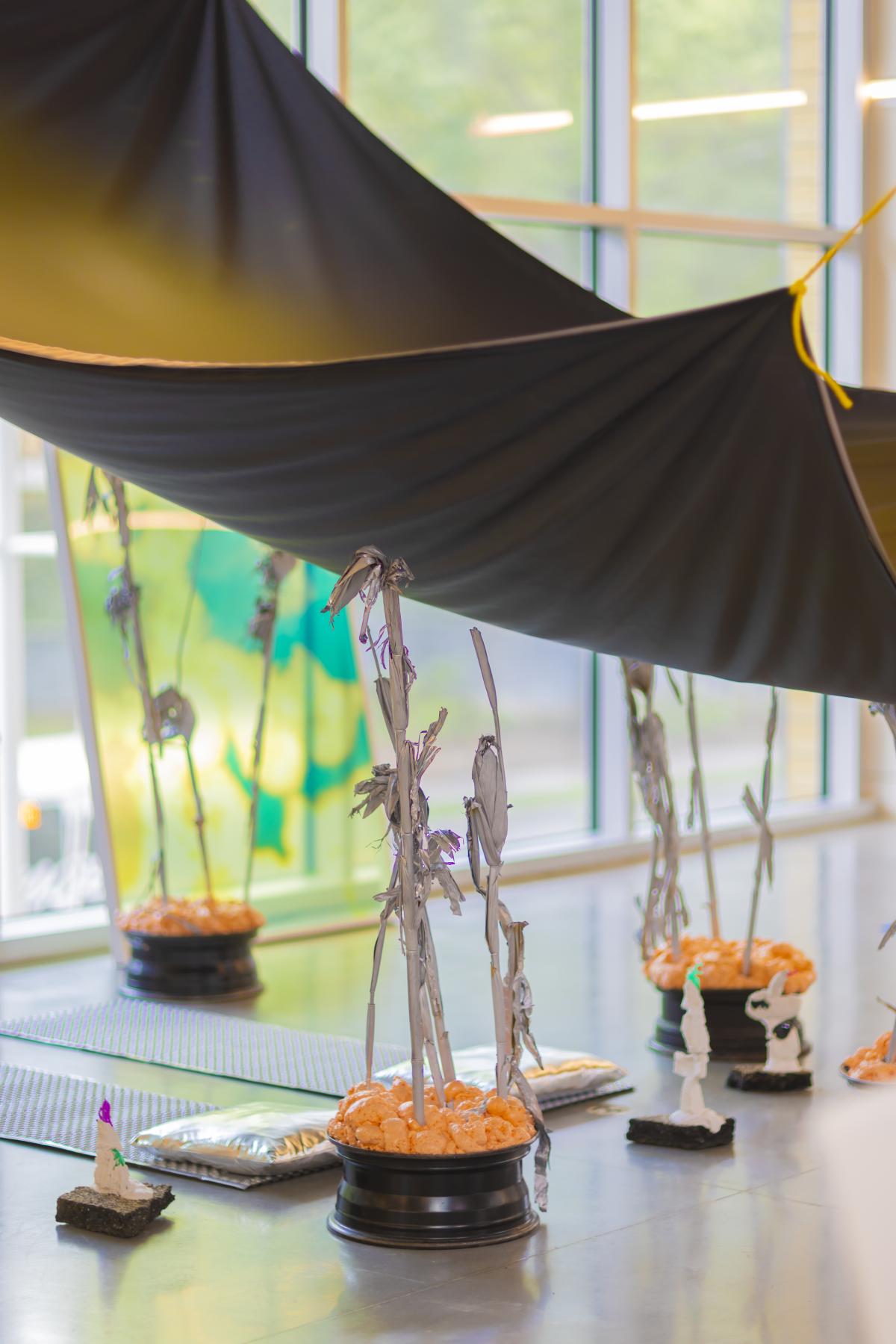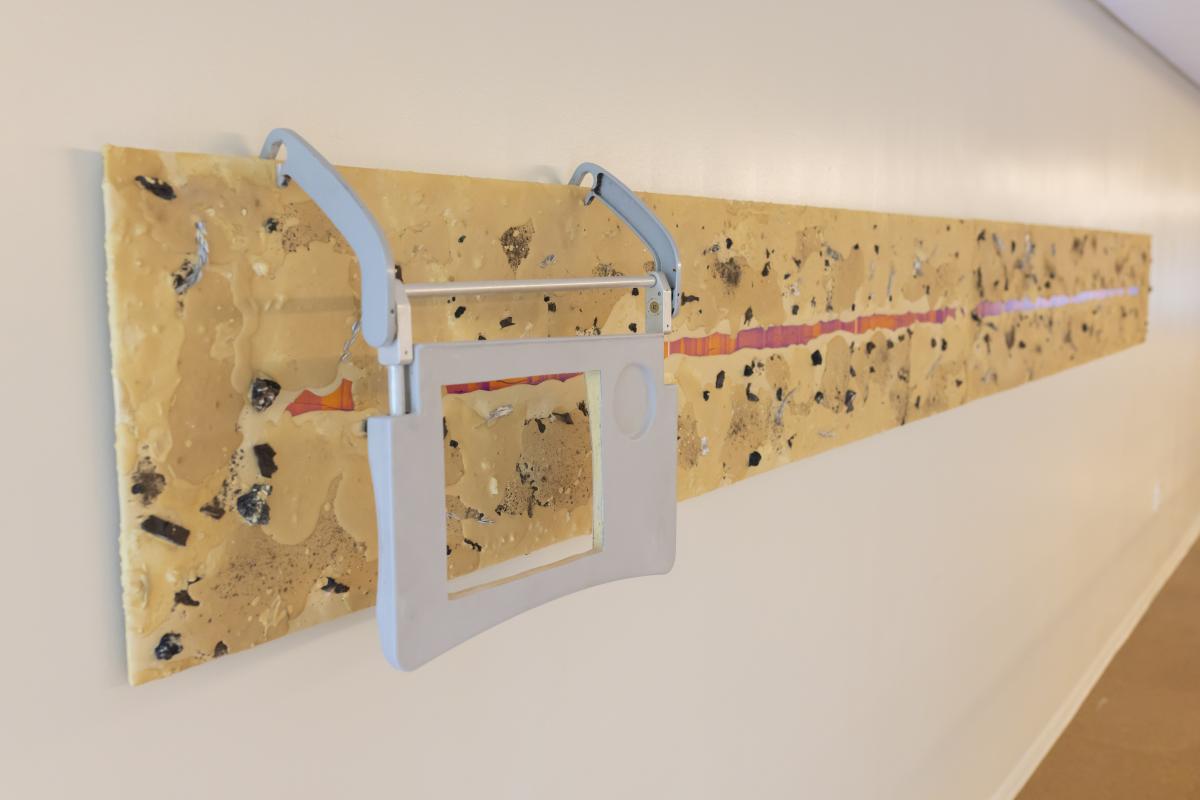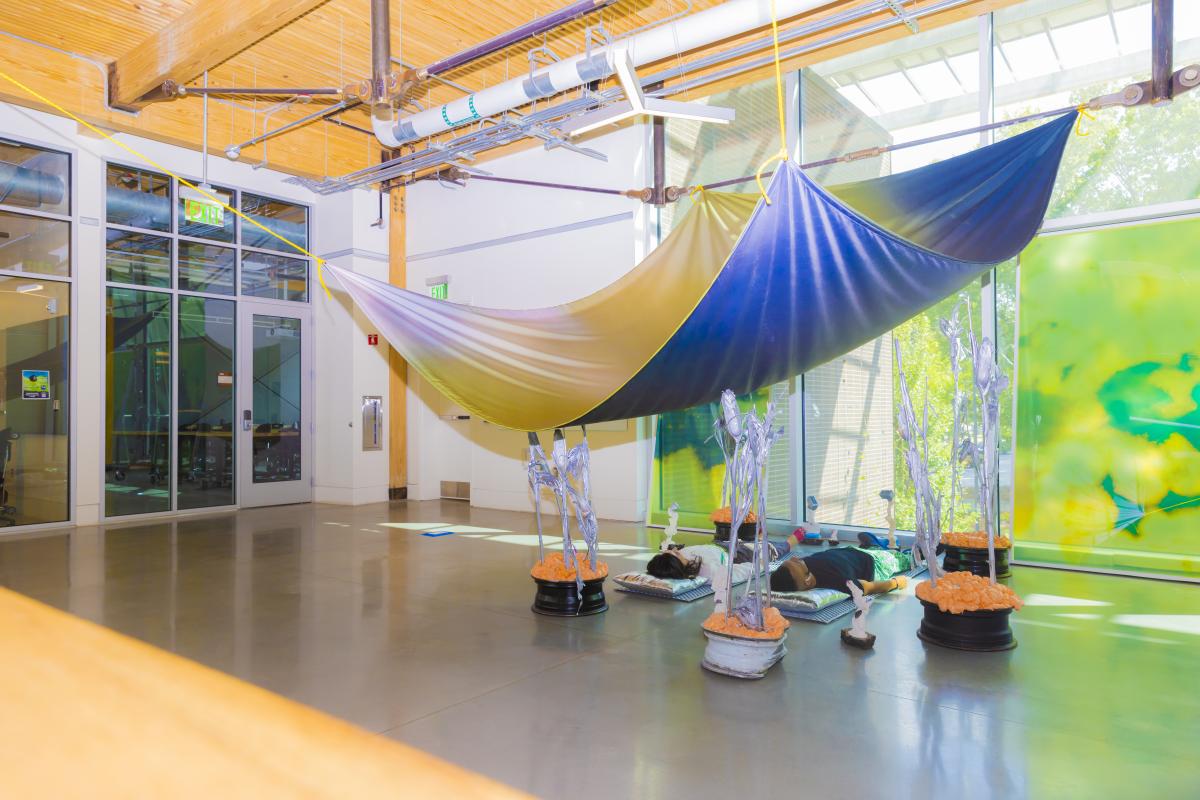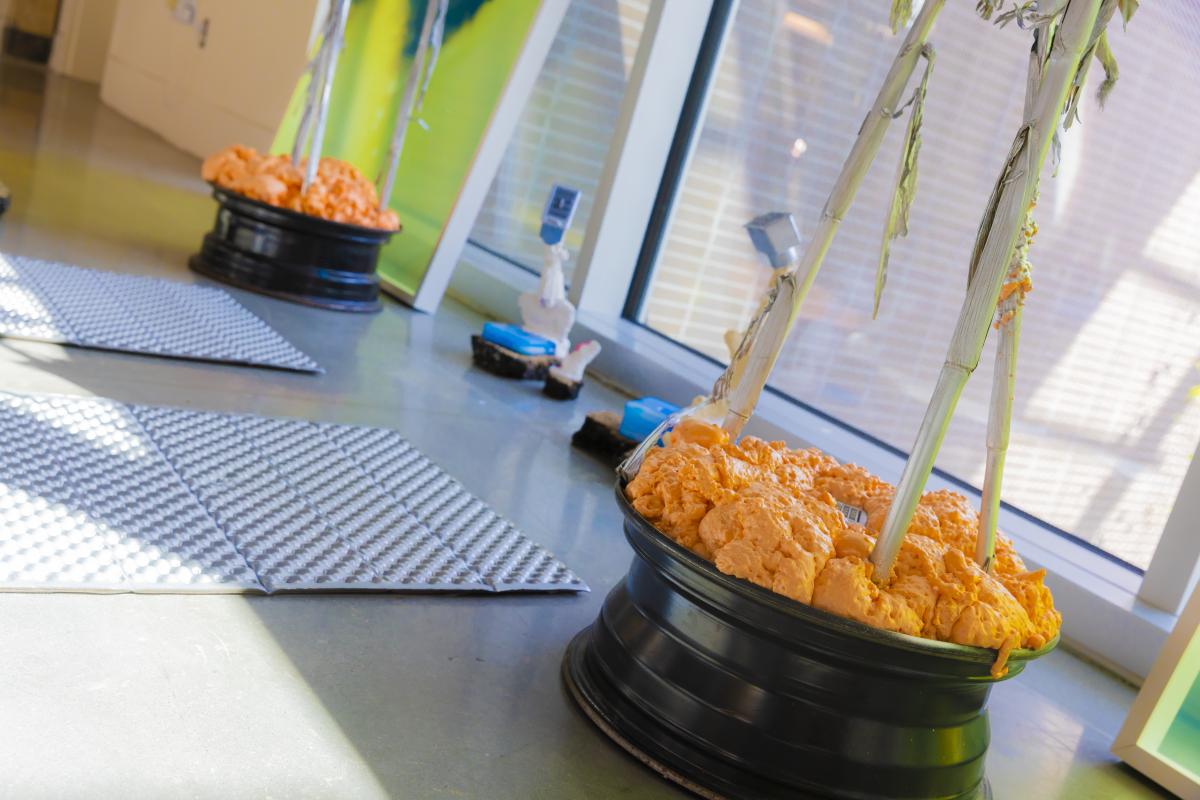Over the last centuries humankind has put processes in motion leading to developments that we no longer have the proper standards to understand. With this in mind my work and research simultaneously indexes our current ecological crises, while speculating on the future of what our earth might look like and how we might engage with it.
The installation, Sulfur Skies is an immersive work that simulates the possibility of a geo-engineered future while discussing the impacts and ramifications of altering the Earth in an attempt to maintain habitability. The primary focus will center around a climate-engineering proposal dubbed solar radiation management, in which sulfur particles injected into the stratosphere would combat rising temperatures by reflecting sunlight away from the Earth’s surface. Mirroring the cooling effects of ash clouds caused by volcanic eruptions, the procedure could have many unpredictable and unfavorable consequences including whitening the daytime sky, obscuring our views of the stars and affecting crop production.
Additionally, Bolen incorporates sculptural works that reference and question other possible geo-engineering initiatives such as coral shielding and increased crop albedo. By using an array of found and cast objects—such as car parts, tinted coral, air conditioning vents and silver corn -- Bolen offers relics and artifacts of our collective global movement, as well as representations of a seemingly fantastical future.
(text and background only visible when logged in)



Sulfur Skies also offers a nod to sustainability, as a way of creating renewable forms of energy to illuminate what might otherwise be in darkness. For a portion of this installation Bolen collaborated with Dr. Juan-Pablo Correa-Baena, Assistant Professor and the Goizueta Junior Faculty Chair in the School of Materials Science and Engineering at Georgia Tech, to incorporate his research into the renewable energy, by powering all of the electronic components of the installation with solar and creating an artificial solar powered night sky to both understand renewable energy and speak of the natural aspects of the Universe that might have to be simulated in a geo-engineered future.
Employing an array of materials that index human impact on the planet and the technology being proposed to salvage it, Sulfur Skies offers a scenario in which we can discuss how collective human patterns affect what is, and what will remain, perceivable, knowable and Habitable.
In the corresponding work at the Georgia Tech Library, At the Core of the Core of the Core, Bolen works with the CT scan of a sediment core he documented on a research trip he made in 2022 to Searsville Lake at Jasper Ridge Biological Reserve in Stanford, California. When the human-made reservoir was dammed in 1892, it created conditions that resulted in the body of water becoming almost entirely filled with unusually undisturbed sediment. Sediment cores such as this mirror our civilization, offering evidence of earthquakes, chemical residues, nuclear testing and fossil fuel combustion. They signify how we have manipulated the world in the past, and may behave in the future. Researchers at the Anthropocene Working Group (AWG) believe this 127-year-old core might offer geologic signatures that indicate when the Anthropocene Epoch can be said to have officially begun. Geologists searching for this marker call it the ‘global boundary stratotype section and point’—or, more colloquially, the golden spike. They may have found the appropriate signals in core samples removed from Searsville Lake.
Invitation to interact
Participants are invited to lay on the silver mats within the installation, to be immersed in the sulfur filled night sky, and artificial solar powered stars. Solar Cells made in collaboration with Dr. Juan-Pablo Correa-Baena, Assistant Professor and the Goizueta Junior Faculty Chair in the School of Materials Science and Engineering at Georgia Tech.
Project Advisor: Carlo Andrea Riccardo Perini
Project Assistant: Ross Landerberger


Jeremy Bolen
Jeremy Bolen is an artist, researcher, organizer, filmmaker and educator interested in speculative planetary futures.
His work has been exhibited internationally at numerous locations including Haus der Kulturen der Welt, Berlin; the Museum of Contemporary Photography, Chicago; Origins Centre Museum, Johannesburg; Museum of Contemporary Art, Georgia; La Box, Bourges; PACT Zollverein, Essen; EXGIRLFRIEND, Berlin; POOL, Johannesburg; University at Buffalo, Buffalo; IDEA Space, Colorado Springs; The Mission, Houston; Galerie Zürcher, Paris; Andrew Rafacz, Chicago; Soccer Club Club, Chicago; Salon Zürcher, New York; The Drake, Toronto; Untitled Art Fair, Miami; Gallery 400, Chicago; Newspace Center for Photography, Portland; Depaul University Art Museum, Chicago and Hyde Park Art Center, Chicago.
Additionally his films have been screened internationally, at venues and festivals including -- Haus der Kulturen der Welt, Berlin; Antimatter (Media Art), Vancouver; Lima Alterna International Film Festival, Lima; and Bideodromo International Film Festival, Bilbao. Bolen lives and works in Atlanta, serves as Assistant Professor of Art at Georgia State University and is represented by Andrew Rafacz Gallery, Chicago.
